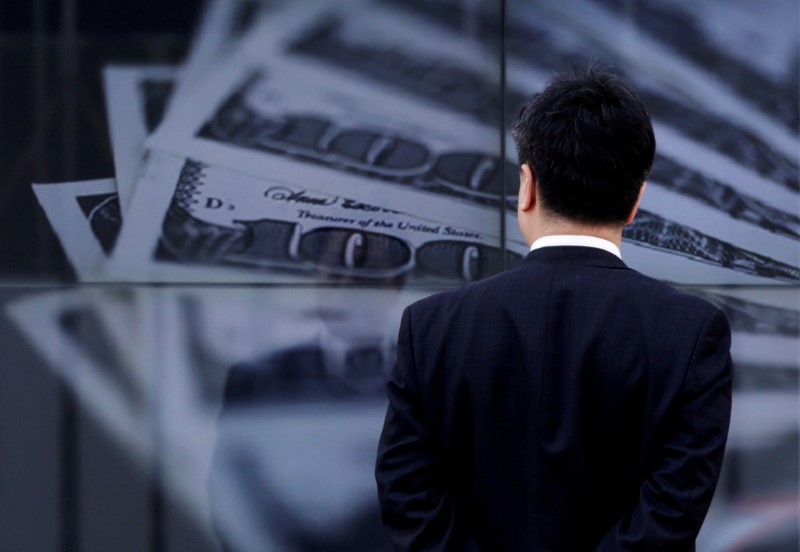Investing.com -- The dollar is broadly lower in early trading in Europe on Friday as markets ‘sell the fact’ of higher U.S. tariffs on China, after ‘buying the rumor’ all week.
As of Friday, tariffs on $200 billion worth of Chinese imports into the U.S. will be raised to 25% from 10%, and President Donald Trump said he had ordered the preparation of new tariffs on a further $325 billion worth of goods. If they, too, come into force, that will mean nearly all of the U.S.’s imports from China will be subject to a 25% tariff.
Beijing threatened to retaliate overnight but had not issued any detailed measures as of the time of writing.
At 03:00 AM ET (0700 GMT), the dollar was lower against both the official yuan and the offshore yuan, although the offshore rate is still nearly 1.5% down from before the weekend, when Trump signalled that the trade talks were falling apart.
The dollar index, which measures the greenback against a basket of six major currencies, was at 97.21, its stability masking a 1% drop against the safe-haven yen this week. The dollar failed to make meaningful gains against the yen on Friday even after the biggest drop in Japanese average earnings in four years in March, which also contributed to household spending falling short of analyst expectations.
The dollar has offset its losses against the yen and Swiss franc this week with gains against sterling, which remains under pressure given the lack of progress in talks between the government and opposition over a formula for getting parliament’s approval for Brexit. The pound faces a test at 0830 GMT this morning from first-quarter GDP data, which are expected to be artificially inflated by panicked stock-building ahead of the original Brexit deadline of March 29.
The euro was slightly higher at $1.1230, on course for a gain of around a quarter of a percent for the week.
Elsewhere, the South African rand strengthened to a two-week high against the dollar after elections returned the African National Congress to power, albeit with a smaller majority that may force it to be more aggressive in tackling legacy issues of corruption and economic mismanagement.
The Turkish lira, meanwhile, stayed stuck clearly above 6.10 to the dollar, even after the central bank raised interest rates on Thursday to defend the currency.
